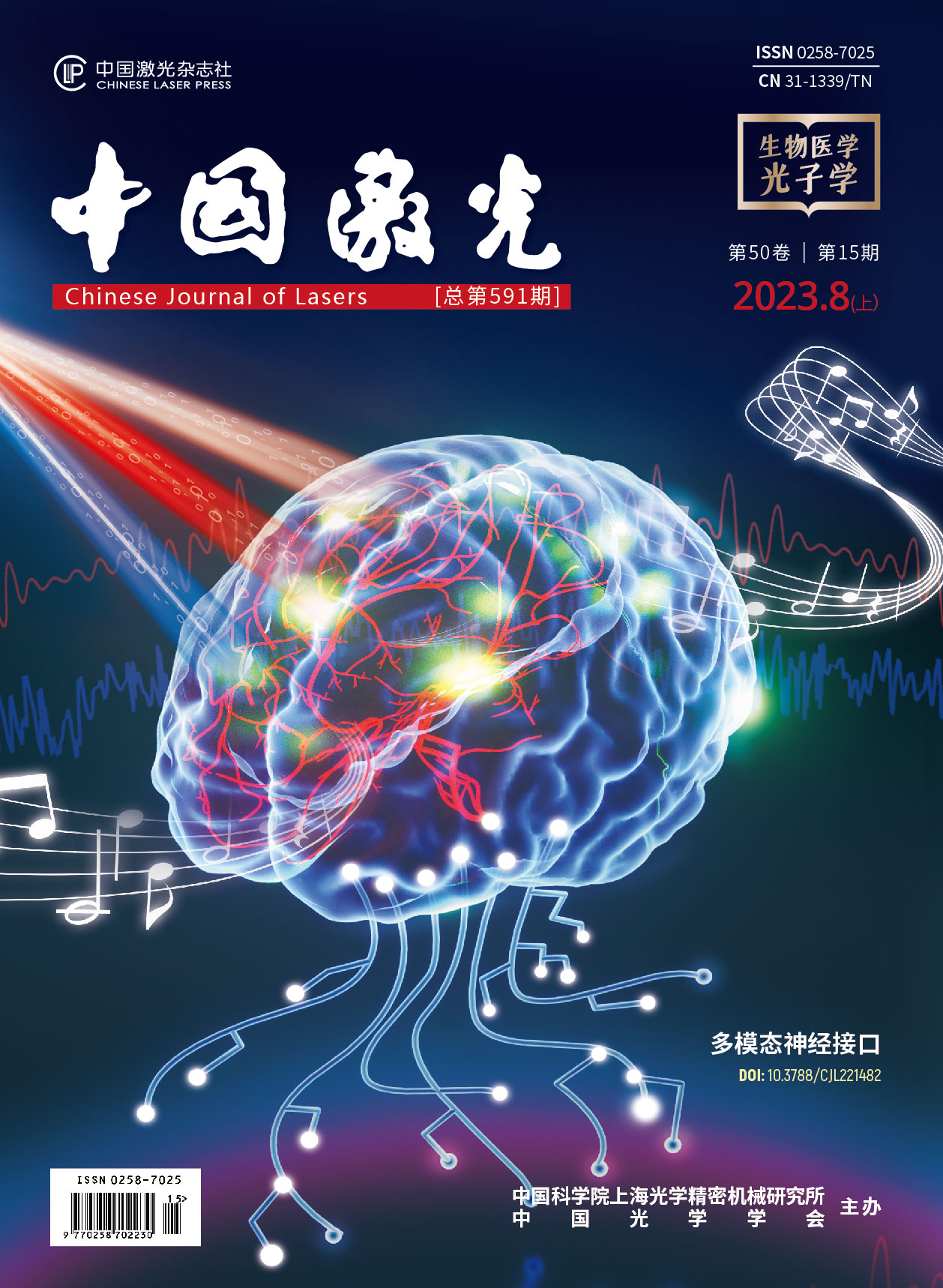曲线型微纳拓扑结构的制备及细胞行为调控  下载: 554次
下载: 554次
The fields of tissue engineering and regenerative medicine have seen significant advancements, prompting extensive research into interactions between biomaterials and cells. Factors, such as surface chemical composition, stiffness, and topography, can influence cell adhesion, proliferation, migration, and differentiation. Advanced micro-nanofabrication technologies have made it possible to study cell-responsive topographical structures. Many cell types exhibit contact guidance behavior on groove structures, which in turn affects cell function. However, in vivo, normal tissues often exhibit curved and wavy extracellular matrix (ECM) structures, which differ significantly from previously fabricated regular topographies. Hence, in this study, maskless optical projection lithography (MOPL) was utilized to fabricate broken lines and wavy structures with varying curvatures. Groove structures were also created as controls. We examined cell migration behavior and morphological changes on the fabricated structures, proposing a cell migration mechanism specific to curved structures. This research aims to enhance our understanding of cell-surface topography interactions and provide valuable insights for designing implant materials.
A series of micro-nano topography structures were successfully created using maskless optical projection lithography. The surface morphologies of these structures were characterized via scanning electron microscopy (SEM) and atomic force microscopy (AFM). To promote cell adhesion, the fabricated structures were treated with O2 plasma and coated with poly-D-lysine (PDL). Cells were then cultured on the topography structures, and their migration behavior was monitored using a live cell station. After cell culture on the topography structures for 24 h, the cells were fixed and labeled with DAPI and phalloidin fluorescent probes for nuclei and actin, respectively. Quantitative analysis of cell roundness, cell perimeter, and cell spreading area was conducted to determine changes in cell morphology. The fabricated topography structures were found to induce cell patterning, and their biocompatibility was confirmed via cell co-culture experiments.
We successfully fabricated grooves, broken lines, and wavy structures using the MOPL technique. SEM images revealed the integrity and uniformity of the topography structures, while AFM images displayed 3D morphology of these structures. According to the AFM cross-sectional profiles, ridge heights within individual topography structures are consistent. Moreover, we subjected the surfaces of these structures to the same chemical treatment, thus isolating the impact of structural topography on cell behavior. Cell migration tracking experiments demonstrated that cells form straight, broken, and curved migration paths in accordance with the underlying topography. This finding suggests that topography structures significantly influence cell migration. Interestingly, cells on wavy structures with high curvature alter their original migration direction from along the ridge to along the curve. High curvature wavy structures prompt cell migration in the curved direction. Confocal fluorescence imaging revealed cell morphology on various topography structures. We observed that cells elongate and migrate along ridges in line regions, whereas they display reduced elongation and adopt curved morphologies in corner regions. In the corner regions of broken-line structures, cells exhibit right-angled morphologies. Actin stress fibers in cells align with the curved direction in high-curvature wavy structure corners whereas these fibers align with ridge direction in wavy structure line regions. We propose that this alignment represents an intrinsic mechanism driving cell migration in curved directions. Furthermore, we cultured cells on annular and hexagonal structures, resulting in cell patterns influenced by the induction effect of curved structures on cell migration. Live/dead fluorescence staining revealed that cells grown with the Mito-Tracker Green channel thrive, with almost no dead cells detected in PI channels. This finding suggests that the fabricated topography structures exhibit excellent biocompatibility.
We fabricated custom-designed topography structures using the MOPL technique, which presents a flexible and efficient method for creating micro/nanostructures. The cells exhibit migration trajectories that strictly adhere to the topography of grooves, broken lines, and wavy structures. In line regions, cells adopt an elongated morphology, while they assume a polygonal shape and increased roundness in corner regions of the topography structures. We posit that the high curvature of wavy structures generates an induction effect on cells, causing cytoskeletal rearrangement and cell migration along the curved direction. This observation suggests that topography plays a role in directing cell migration. By designing patterned structures based on cells' responsiveness to wavy structures, cell patterning can be realized. This study demonstrates that topography can significantly alter cell morphology and migration, enhancing our understanding of cell response mechanisms to topography. Additionally, our findings serve as a reference for designing implant materials.
郭敏, 刘享洋, 董贤子, 刘洁, 金峰, 郑美玲. 曲线型微纳拓扑结构的制备及细胞行为调控[J]. 中国激光, 2023, 50(15): 1507303. Min Guo, Xiangyang Liu, Xianzi Dong, Jie Liu, Feng Jin, Meiling Zheng. Fabrication of Curved Micro-Nano Topography Structures and Regulation of Cell Behavior[J]. Chinese Journal of Lasers, 2023, 50(15): 1507303.







